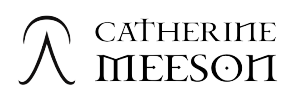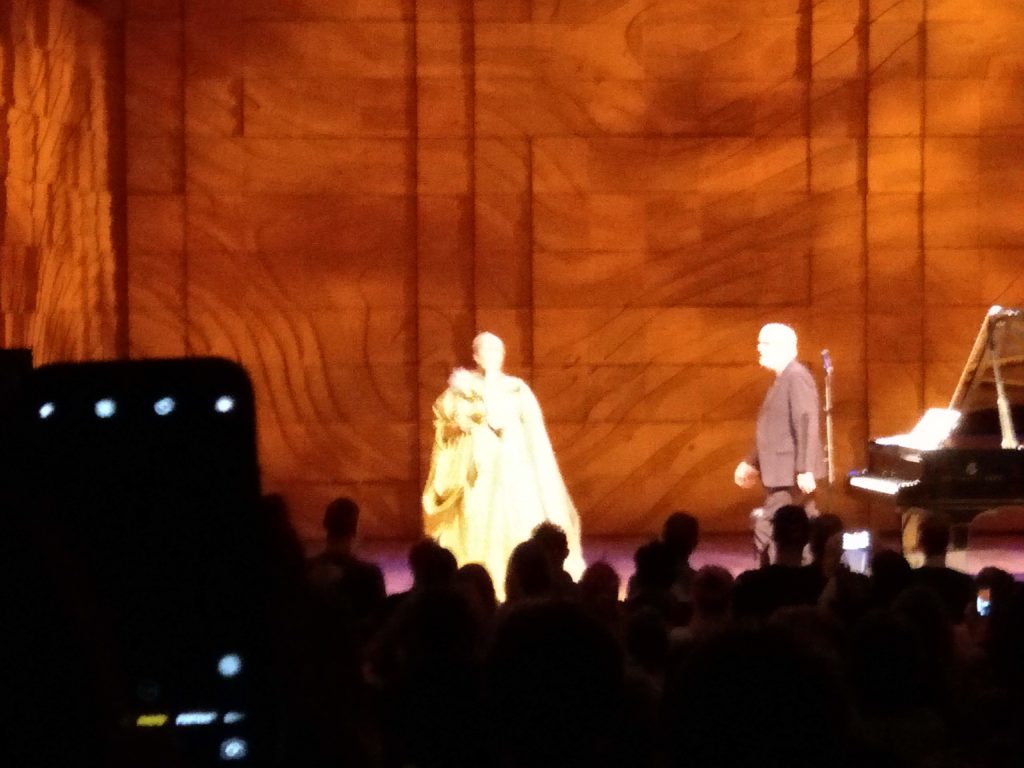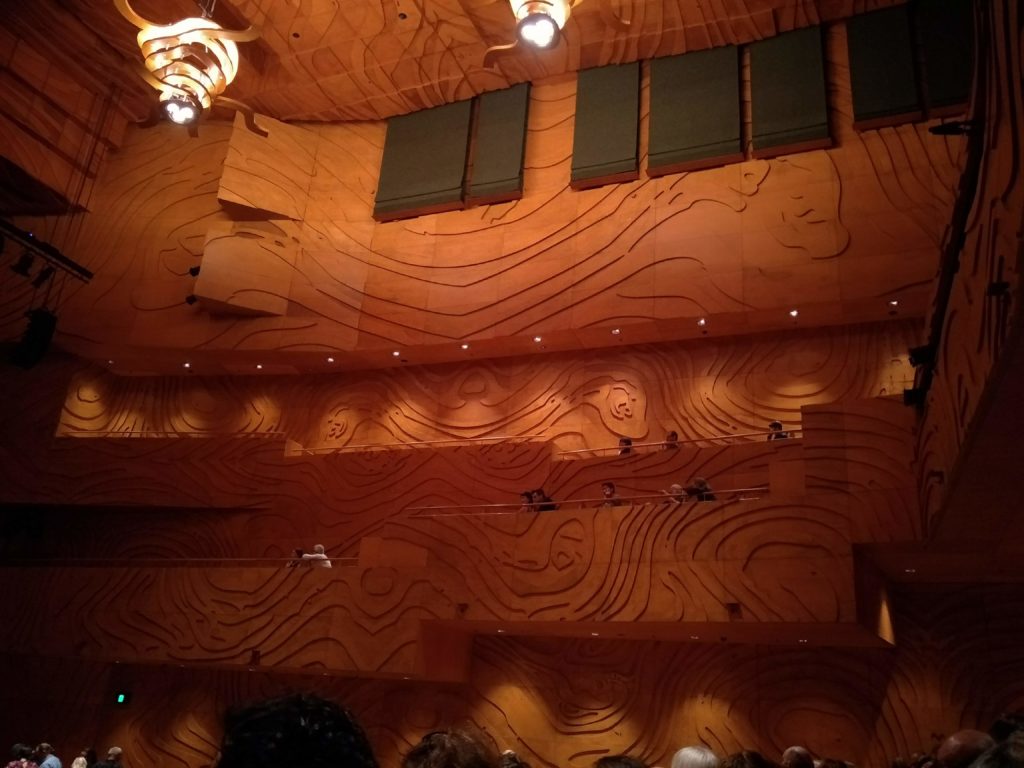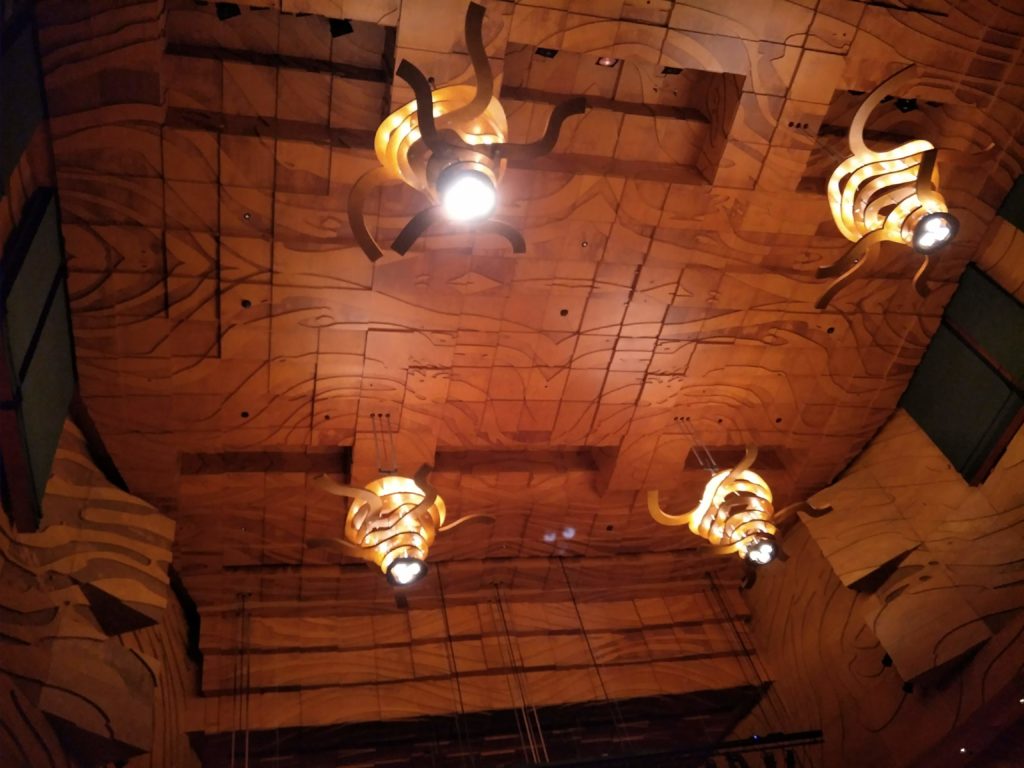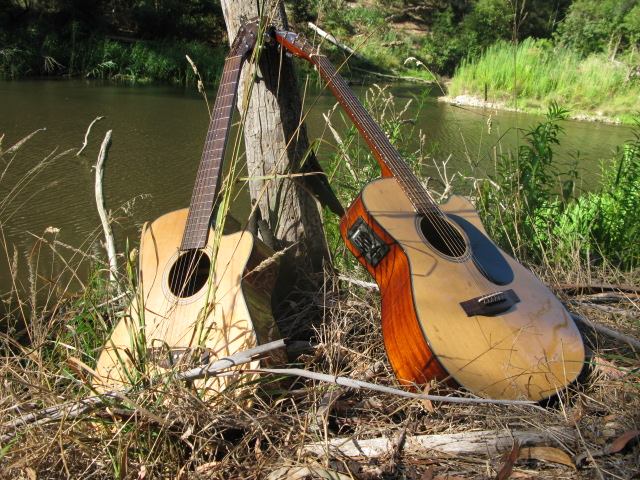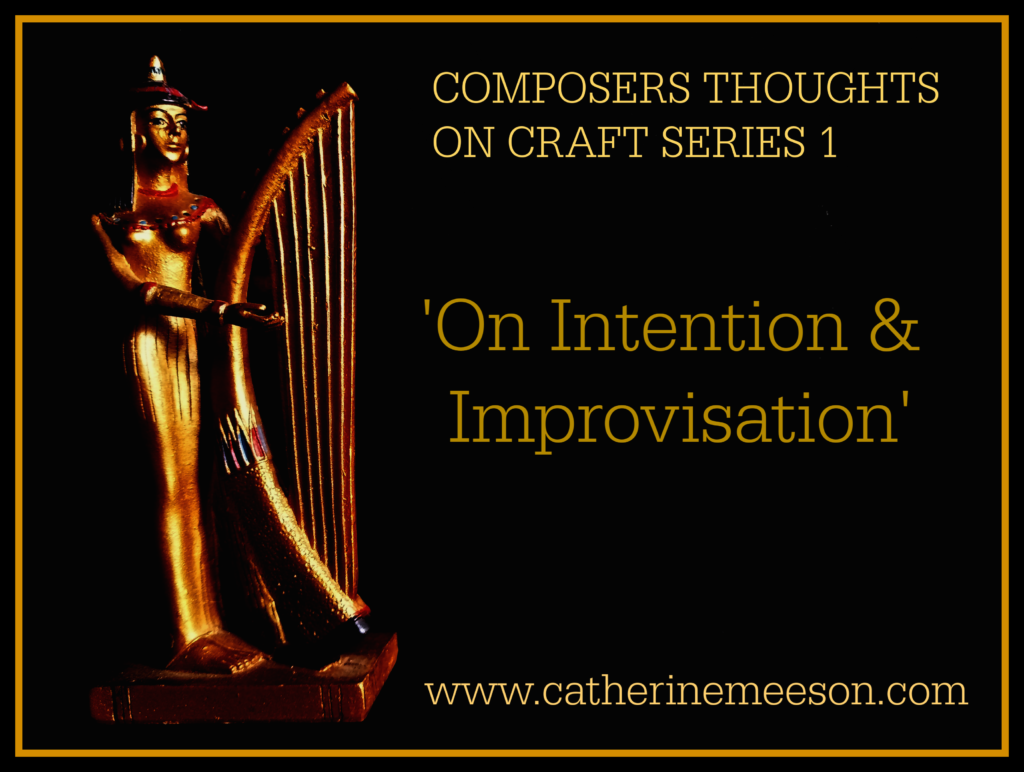
by Catherine Meeson © Feb 2019
It’s been quite a few months since the last in the series, ‘On Inspiration’ written concurrently with the album The Call of Oma. I chose to talk about a source of musical inspiration and felt reinvigorated after seeing Melbourne Symphony Orchestra play the live score for the Empire Strikes Back by John Williams. In previous blogs I went into some of the inspiration for the album which has been concepts of deep time and deep ecology. Graham Hancock’s work was a big spark for the whole narrative element, referencing his research creatively with it’s cutting-edge archaeological findings and earth science findings. This blend has helped birth the albums personal philosophy whilst referencing mythology and symbolism via the art of storytelling. With further work (a lot it could make a great film script).The album was born out of the performance art presentation I did to launch I Am (Song of The Earth) on Earth Day 2017.
So, after summarising inspiration in a general and a specific sense (in the last post) let’s get on with ‘On Intention and Improvisation’. It is an interesting coupling that I have deliberately chosen, as one informs the other in this case. The intention to write and the act of writing involves improvising with the record button on. Intention is the guiding force to initiate the process and produce a strong thematic work, in this sense. I have just been revising the 2011 track Journeys Through the Timeline which I shared on Instagram with some thoughts about rearranging it with different instrumentation. The timbres of the original composition just weren’t sitting right in relation to the other tracks,. I compared the original session files with session files I have been using in the albums other tracks and wrote down instrumentation lists. I then looked at the frequency content, the bass, mids and highs and noted what was needed. I looked at what is essential to the essence of ‘Journeys’ unique timbre and sense of place (an ice age cave and arctic glacial planes). I then combined and imported instrumentation from some of the other tracks. Some parts have just been rearranged with new instrumentation choices with the same midi sequences, but there are completely new musical voicings and parts such as flute.
The writing of anything new is always improvising or playing, just finding sounds, the sequences both rhythmic and melodic that I like. It is all a pretty rapid process. I find the timbre I like, (feel thing) improvise to get a part that blends well, play it a few times and then record it. The intention is to capture the essence as soon as possible, so it has an organic human element even if it is an electronic based midi instrument sample. I have been able to use more of the Project Sam orchestral samples which are at a higher quality than some of the ones within the Reason program itself (my DAW). Project Sam is a plug in for Reason but produce some amazing orchestral sample packs at a very high end, one day I would love to purchase them ($000’s).
Lisa Gerrard & Paul Grabowsky @ Melbourne Recital Center- An amazing collaboration, woman and source of inspiration. The amazing acoustic treatments of the Recital center are a work of art in themselves!
I do believe the transmission of energy and intention flows through the music, as does the imagery generated in my mind, it often informs the intention and creation or solidification of the tracks musical content and people tell me they see what I see quite often.
Collaborations- Floating Along the River of Life– strings with wind and water. Photo Sean Geerling. Look out for our work into the future!
So, we have retained the singing icicles (a specific synth sample sound that gave birth to the Journeys track in the first place), a Thor synthesiser, and the wind chimes I recorded. A real wind sample has replaced the midi wind sample. We have also retained an Ominous sounding Subtractor synthesiser.
I have spoken intensely about the intention of this album and the intention of the concepts behind it. I will write further in the ‘On Conceptualisation’ blog over the next couple of months, possibly approaching filming for the film clip and production for the track ‘Come Back’ a song about returning to the source of all life the great oceans and the mystic union of spirit and matter, which I hope to release on June 8 World Oceans Day if all goes to plan (stay tuned). The whole film clip involves lots of conceptualization and planning. The lyrics for that song were originally written in 2002 after seeing the Dalai Lama in Geelong. I went down to the world famous Bells Beach afterwards and wrote them. The Dalai Lama is regarded as the incarnation of Avalokiteshvara (Quan Yin’s male aspect). Anyway, I digress.
Improvisation is classically defined as “a performance according to the inventive whim of the moment, i.e. without a written or printed score and not from memory (Kennedy 1996, p. 536). Classical and jazz improvisation as we know it is often performed by virtuosos with high levels of skill, learnt skill and methods. The voicings and intervals expressed differ in each style, with the classical idiom preferring more consonant intervals, major and minor thirds fourths fifths and sevenths with dissonance more as a passing voice. With what I understand of jazz improvisation, the preferred choices for improvisation and extended voicings are built off sevenths, ninths ,elevenths and thirteenth chords, which add more body to a sounds timbre, or complexity that I find very attractive.
To me, improvisation relates to the essence of free play and has a more exploratory quality. There is a great book by Stephen Nachmanovitch called ‘Free Play- Improvisation in Life and Art’ that you may like to check out for it’s rich expounding of human creativity and process. See the quote below.
Improvisation is guided and shaped by knowledge, but not dependent upon it. Improvisation can be done by anyone, both skilled and unskilled musicians. It can be rhythmic or melodic and indeed it is a practice of response to life in the moment, as well as in the arts. Most songwriter’s write or compose by improvisation. Intention can provide structural components such as timing, specific instrumentation, the desired mood or key, or a topic of response for example. But working to such a rigid structure can be limiting, if one does not allow oneself to go out of the self-imposed boundaries that have been created. I enjoy combining intention and improvisation, giving a structured approach to inspiration. The three ‘I’s’, Inspiration Intention and Improvisation, are where the essence of music lay. Inspiration provides the seed, in this case the story in prose poetry and songs of my character Oma which reference both science and mythology, put to music in what I like to describe as ‘musical mythology’. The intention was to write a concept album. I wasn’t sure that I could achieve it with thematic unity and make it make sense, but it has surpassed my expectations and I believe I did it justice. Improvisation has been the constant for every instrument part in each track, layering the arrangement as I go with the same timbre, for thematic unity, as it is electro orchestral or electro classical. The better we know our building blocks (musical theory with keys modes and playing styles of various instruments) the better we can theoretically improvise. But again, improvisation in essence, is a process of inventiveness and of trust, of feel and experimentation.
“In free improvisation we play the sounds and silences, and as we play them they disappear forever. In producing large works – books, symphonies, plays, research projects, films- we are perforce taking the results of many inspirations and melding them together into a flowing structure that has its own integrity and endures through time”…
“The muse presents raw bursts of inspiration, flashes, and improvisatory moments in which the art just flows out. But she also presents the technical, organisational job of taking what we have generated, then filing and fitting and playing with the pieces until they line up. We arrange them, cook them, render them down, digest them. We add, subtract, re-frame, shift, break apart, melt together. The play of revision and editing transforms the raw into the cooked. This is a whole art unto itself, of vision and revision, playing again with the half baked products of our prior play”. Nachmanovitch,S .
There are many great musicians and artists who are self-taught, non-classically or jazz trained and it is their voice, methods and feel that we respond to, often it becomes what people also seek to emulate, that unique spark of ‘who they are—the thing the X Factor- their sound’. I know no one who says I will create a tune in Eb major with this specific chord progression using ‘x’ mode. When I was at Tafe (higher ed) there was a song writing class which was really a long drawn out way of doing what takes in some instances minutes or hours. Songs do just ‘come out’, but for some people they have to laboriously sit and create. I played along at Tafe because it was expected of me, but to me it was totally anal and counter intuitive. There is no right or wrong way to improvise or write, only the product of one’s creativity the work. As long as the writer is happy with their work, so will any prospective audience be. I tell this to my students, hoping to marry the conventional aspects but light the fire of their unconventional non conforming natures so they may throw out the rules, push the boundaries and learn to trust themselves and their body mind spirit process. It really is a doorway, a sacred threshold of opportunity we must choose to enter. Many never walk through it. They can be gifted, able to play with the best bands in the world but can they write? Can they loosen the moors of their minds control long enough to wait and see what emerges, finding that undefinable magic essence that builds universes?
So, until next time, I’m happy to receive any correspondence or questions about the process or song writing composition in general as well as provide mentoring. Please reach out to me we are now approaching the end of the Composers Thoughts on Craft Series 1 blogs. Yet to come is ‘On Conceptualisation’,’ On Studio Craft’ ‘On Social Norms’ and lastly ‘On Philosophy’. You can check out my previous blogs in the series in the archives of the last year.
2019 will debut The Call of Oma album. Mastering crowdfunding campaign coming soon- I do hope you can help me to take it over the line and continue journeying with me as you have in the last year since I started writing the composers thoughts series 1 year ago. It is my sincere hope those of you have have been coming along enjoy these thoughts and maybe are inspired by them enough to try something different in your life or creative works. Fortune favours the brave right…even if it does not deliver the bounty?
The next video I will produce in the Series will go out with On Studio Craft approaching winter time. I will enjoy sharing what I have learnt since my first release of some of the experimenting little tricks overviews along the way exploring my tools in the digital and analogue domains.
Don’t forget to like and subscribe and sign up for my mailing list if you haven’t already at
Subscribe here https://www.catherinemeeson.com/ship-mates/
Join me on Facebook https://www.facebook.com/CatherineMeesonMusic/
Join me on Instagram https://www.instagram.com/catherinemeeson/
YouTube subscribe https://www.youtube.com/user/CatherineMeeson
Till next time, don’t forget to watch my By Mandate of Heaven movie below , send me your reviews, with love always, On the Way of Harmony- Catherine xxx
BIBLIOGRAPHY
Kennedy, M 1996, Oxford Concise Dictionary of Music, 4th edn, Oxford University Press, New York.
Nachmanovitch, S 1990, Free Play- Improvisation in Life and Art, Penguin Putnam Inc., New York, NY.
